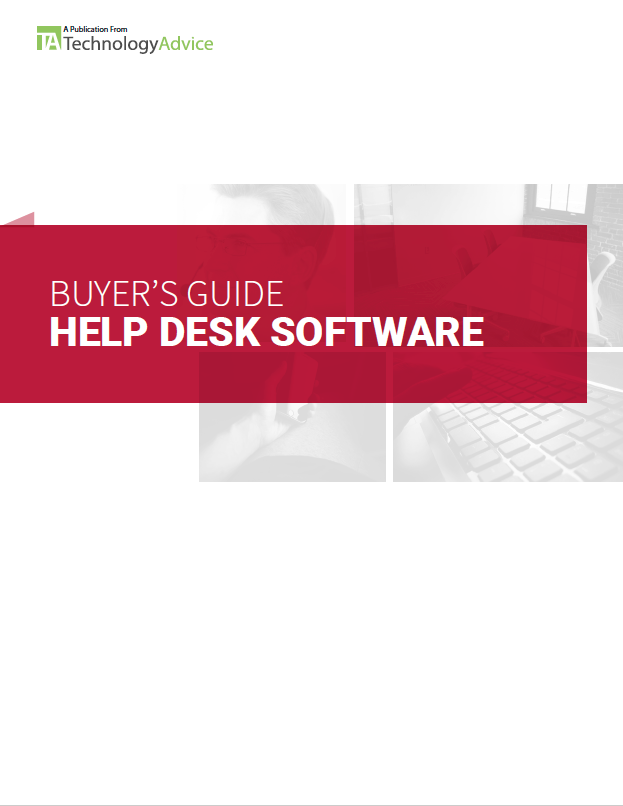Founded in 2007, Zendesk built its helpdesk software with the goals of remaining authentic, listening to customers, and keeping everything beautifully simple.
Some 10 years later, Zendesk is now a market leader in the helpdesk vertical, with a formidable amount of features available due to recent acquisitions of We Are Cloud SAS and Zopim.
Zendesk also produces some of the best marketing videos in the B2B software world.
The combination of a well-built product and a well-crafted brand means Zendesk is almost always a top contender when businesses are choosing helpdesk software.
But no two businesses are the same, and many decide to explore Zendesk alternatives. Maybe you’re one of those people.
Perhaps you think Zendesk is too pricey, or maybe you hate their new ad campaign (don’t be a Philistine). Either way, the market is full of solutions that offer similar helpdesk features.
Let’s take a look at some of the standouts.
Freshdesk
If you want a platform that does everything Zendesk does without actually being Zendesk, you should check out Freshdesk.
Freshdesk uses a shared inbox that aggregates requests from multiple channels as its central support hub. Requests from Twitter, Facebook, email, phone, and live chat can all be converted into tickets, and users can filter tickets using a number of criteria or create ticket views to easily navigate the shared inbox.
You’ll find a slew other features, like automation, reports, and knowledge base construction, but the gamification feature is what really sets Freshdesk apart. By enabling Freshdesk Arcade, you can use points, badges, and other game elements to make the work of customer support a little less monotonous.
ALSO READ: Freshdesk vs. Zendesk
Happy Fox
Let’s be honest. You love the name Happy Fox. It reminds you of those videos you’ve seen online of a little red fox smiling as someone pets it.
Happy Fox reinforces this sentiment with solid helpdesk functionality and subscription tiers that work great for small and mid-sized businesses.
Beyond the standard support features, this product lets you create a multilingual knowledge base that can be translated in one click and supplies an API that you can hook up to your CRM and ERP to deal with internal support issues.
Happy Fox is also a multi-brand platform, which means you can create a customer portal for each of your brands and manage support for all of them through one system.
Desk.com
Desk.com is owned by Salesforce, which means it’s backed by one of the biggest software companies in the world and is perhaps the most powerful helpdesk software on the market.
Like most of the other solutions on this list, Desk.com uses a shared inbox as its homescreen, and users will do most of their work from of that screen. Salesforce’s helpdesk software comes equipped with an armada of features including automation rules, macros, multi-channel support, full mobile functionality, and much, much more.
Out of this library of features, a few stand out. Desk.com lets you include surveys in outgoing emails, which makes it easier to quantify customer feedback. There’s also Customer Health Monitoring, which uses previous interactions to predict which customers need more attention — even if they haven’t overtly communicated their discontent.
If you want the solution that can outmuscle everyone else in the room, Desk.com is the answer. It is unclear whether or not you are contractually obligated to refer to the software as “Desk.com” or whether you can just call it “Desk” after purchase.
Groove
Most of the products on this list are jockeying for position based on the depth of their feature library.
Groove takes a fundamentally different approach. Instead of loading their software up with every function under the sun, they build a product based on simplicity and designed for small business.
That’s not to say Groove is a lightweight. The software still includes all the helpdesk essentials: multi-channel response aggregation, reporting, ticket labeling, macros and automation, a knowledge base, etc.
Groove’s most interesting feature is its integration with email providers like gmail and Outlook. This eliminates all of the strange markups that appear in most helpdesk emails, which makes for a more authentic experience between you and your customers.
They’ve also got a great blog, if you’re into the whole helpful content thing.
UserVoice
Beyond fixing your customers’ problems and ensuring they don’t hate you, there’s an ancillary benefit to helpdesk software — identifying patterns in support requests as problem areas in your product.
This type of product management is UserVoice’s speciality, though they do market the user feedback suite as a different product than their helpdesk software. If you decide you only want the core helpdesk functions, UserVoice is still an excellent option.
The software has a great interface and equips you with all the essentials to run and scale your helpdesk. Noteworthy features include native integrations with CRM and VoIP software as well as customer satisfaction surveys.
If you’re curious about the customer feedback functionality, check out the video above for a quick walkthrough.
* * *
Scaling customer support isn’t easy these days. Support reps have to deal with a constant stream of requests from a population of customers who have been conditioned to hate waiting.
Helpdesk software makes this daunting task easier to manage, and even though Zendesk is a market leader, there are numerous Zendesk alternatives that can help your support team keep your customers happy. To browse solutions and get a custom recommendation for your business, visit our Product Selection Tool.

